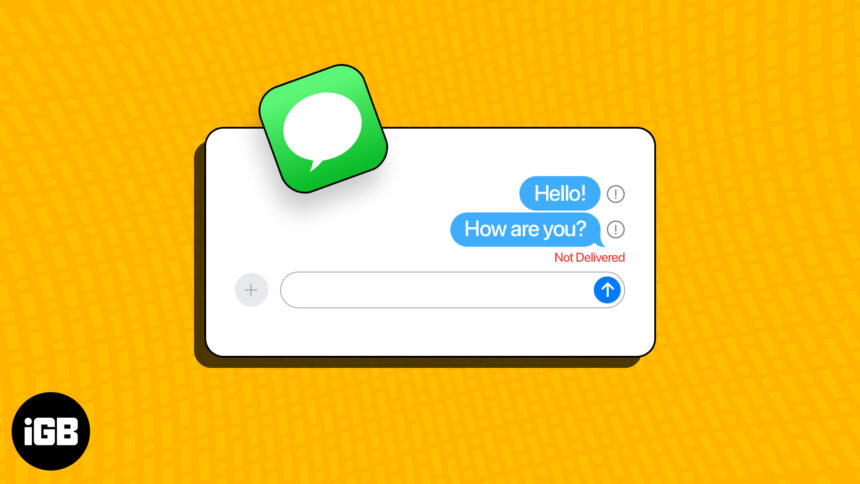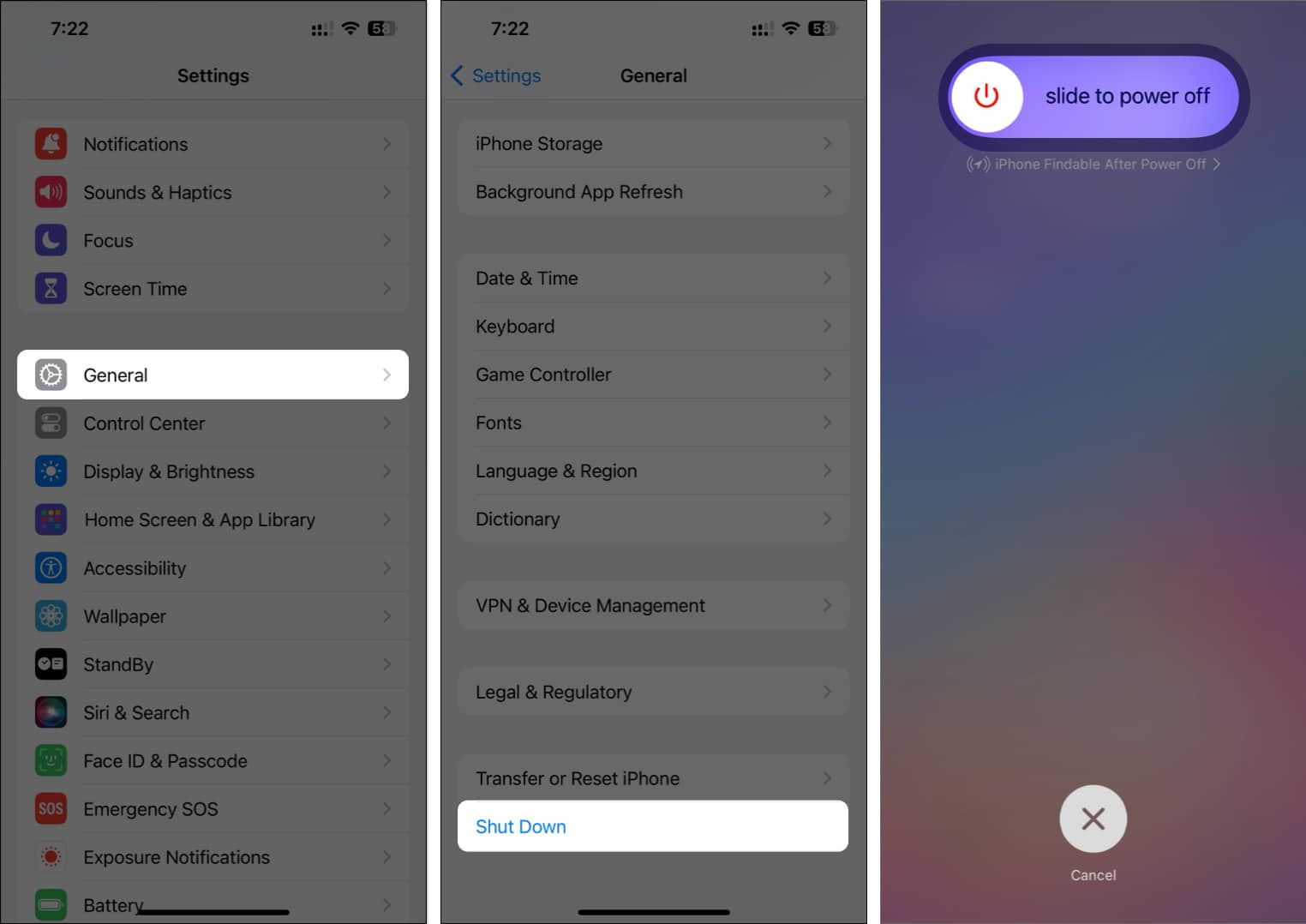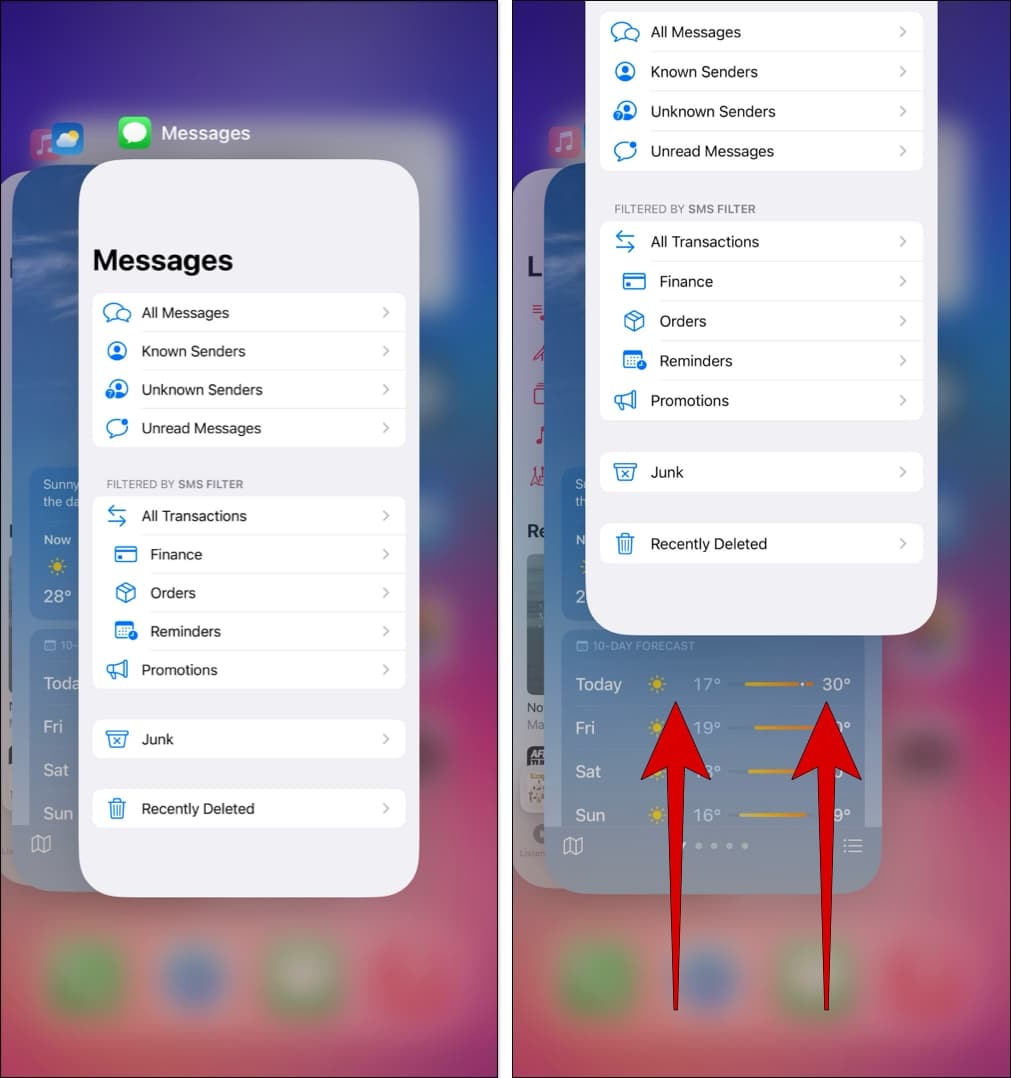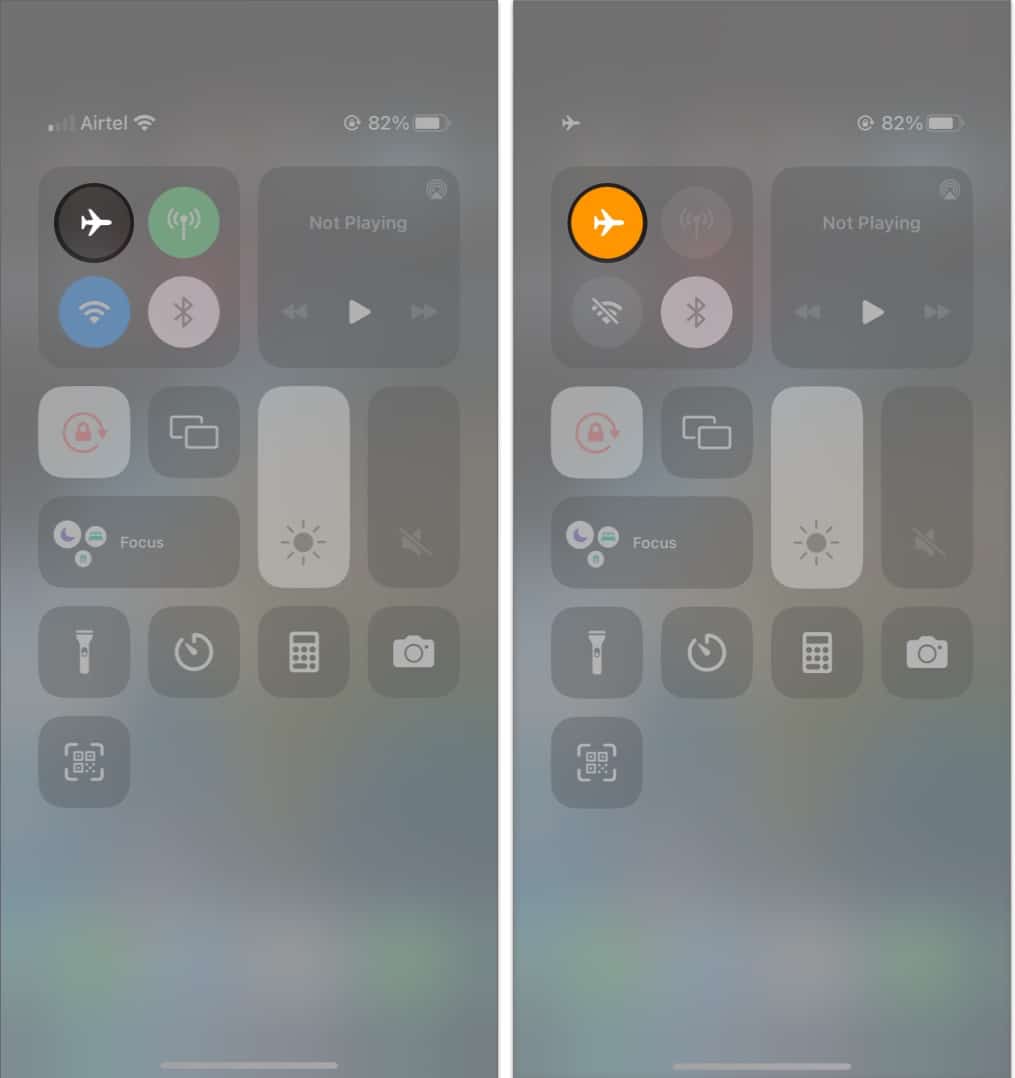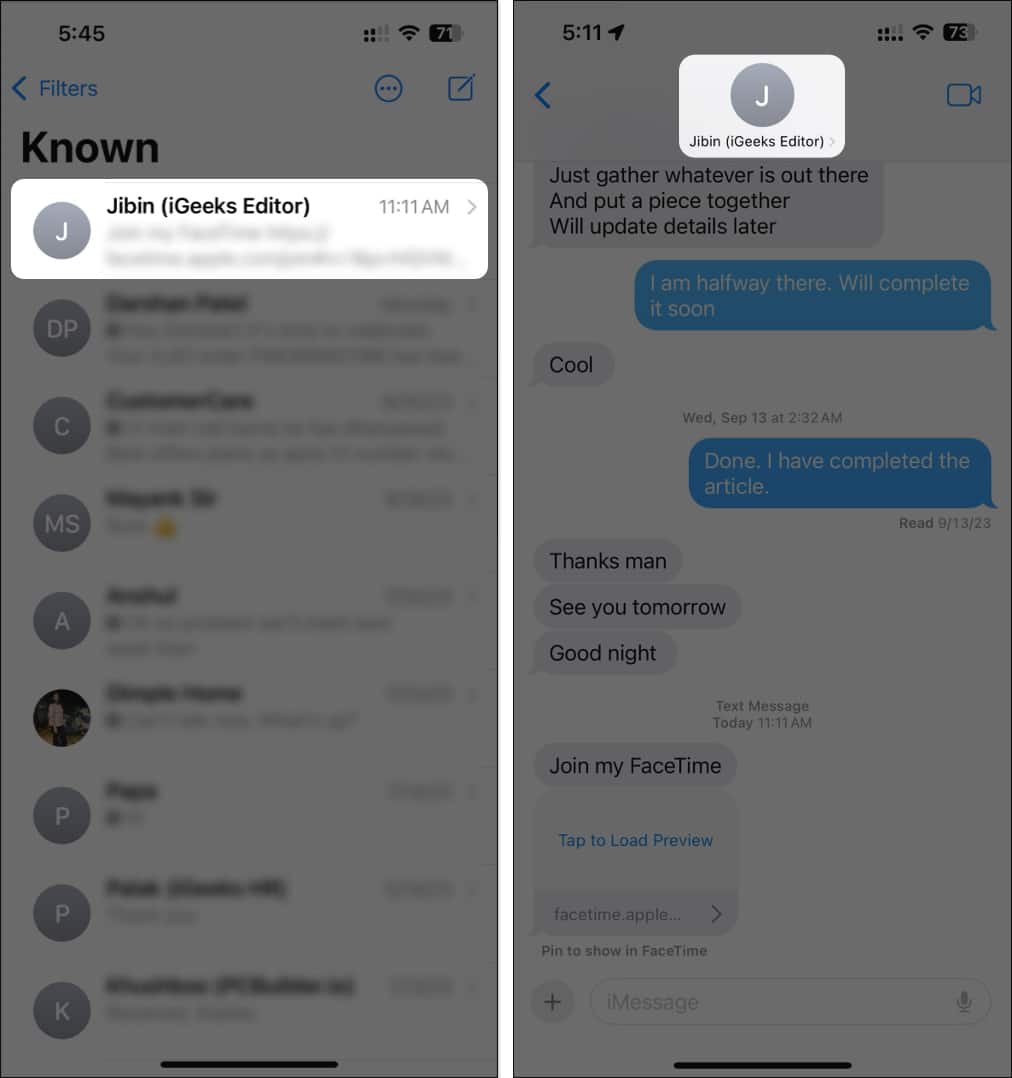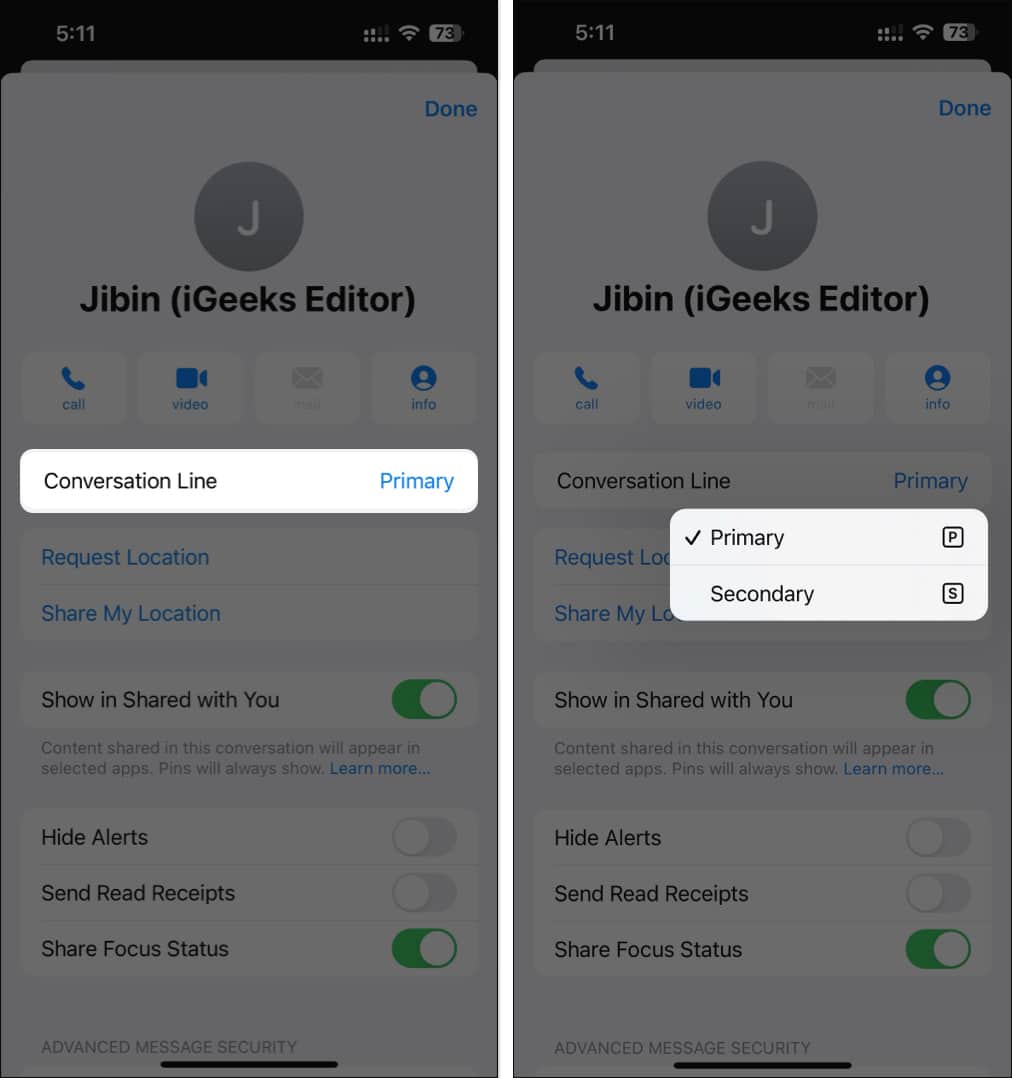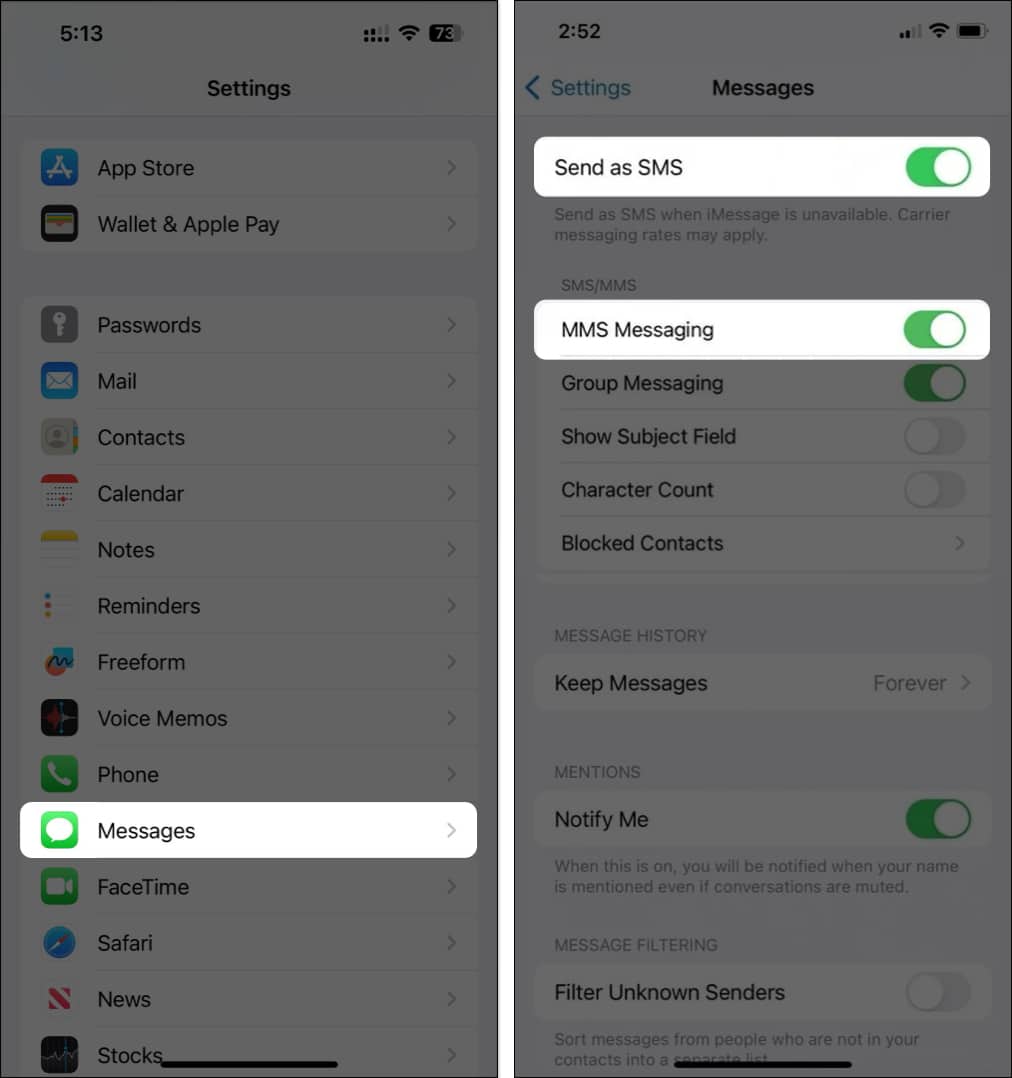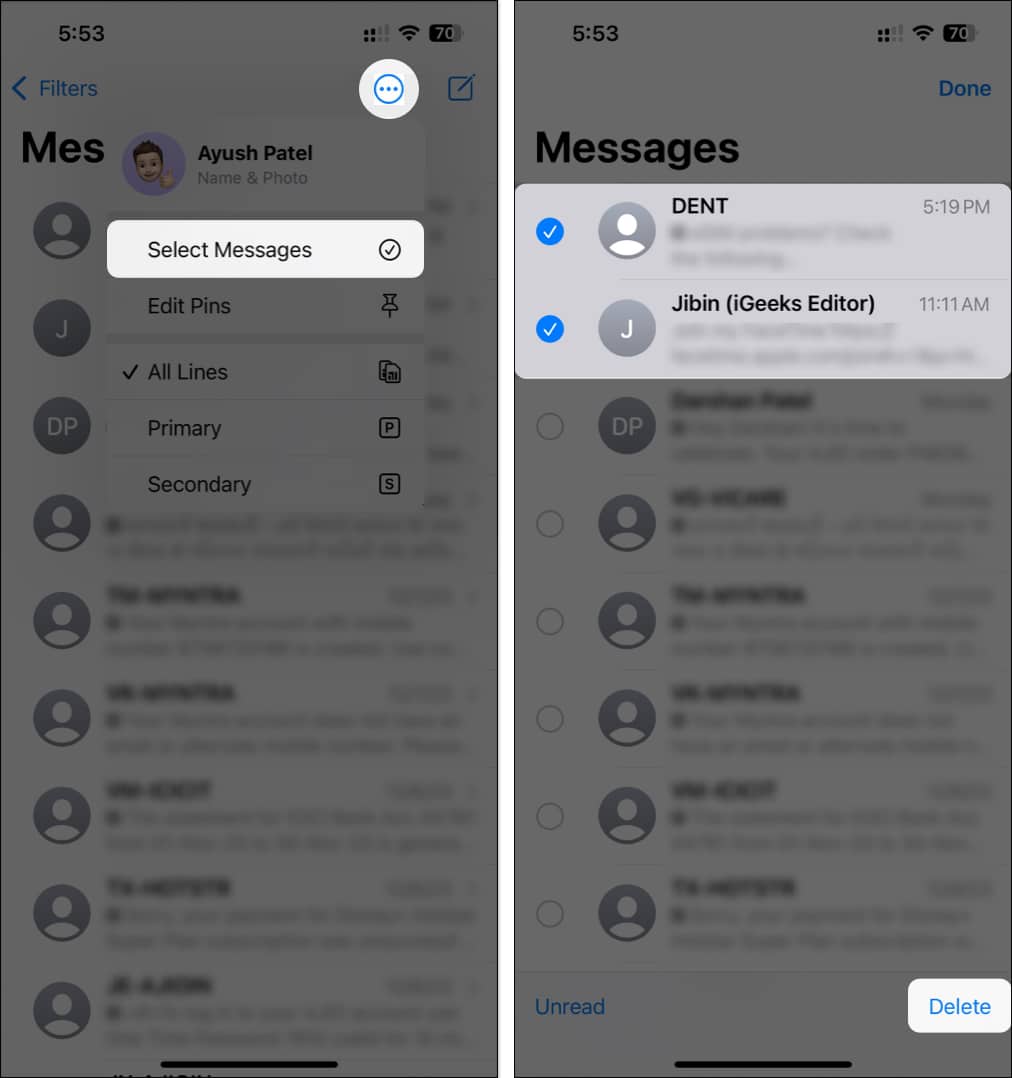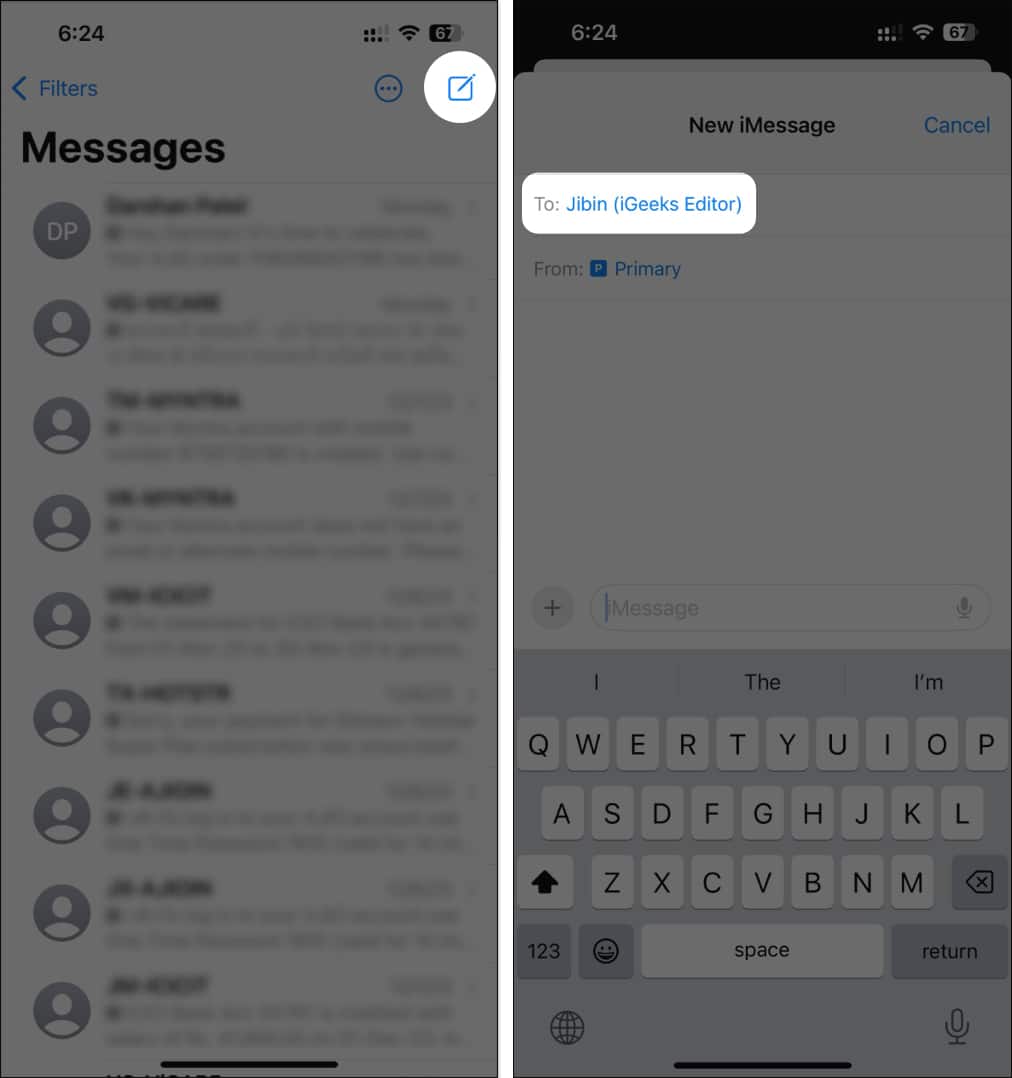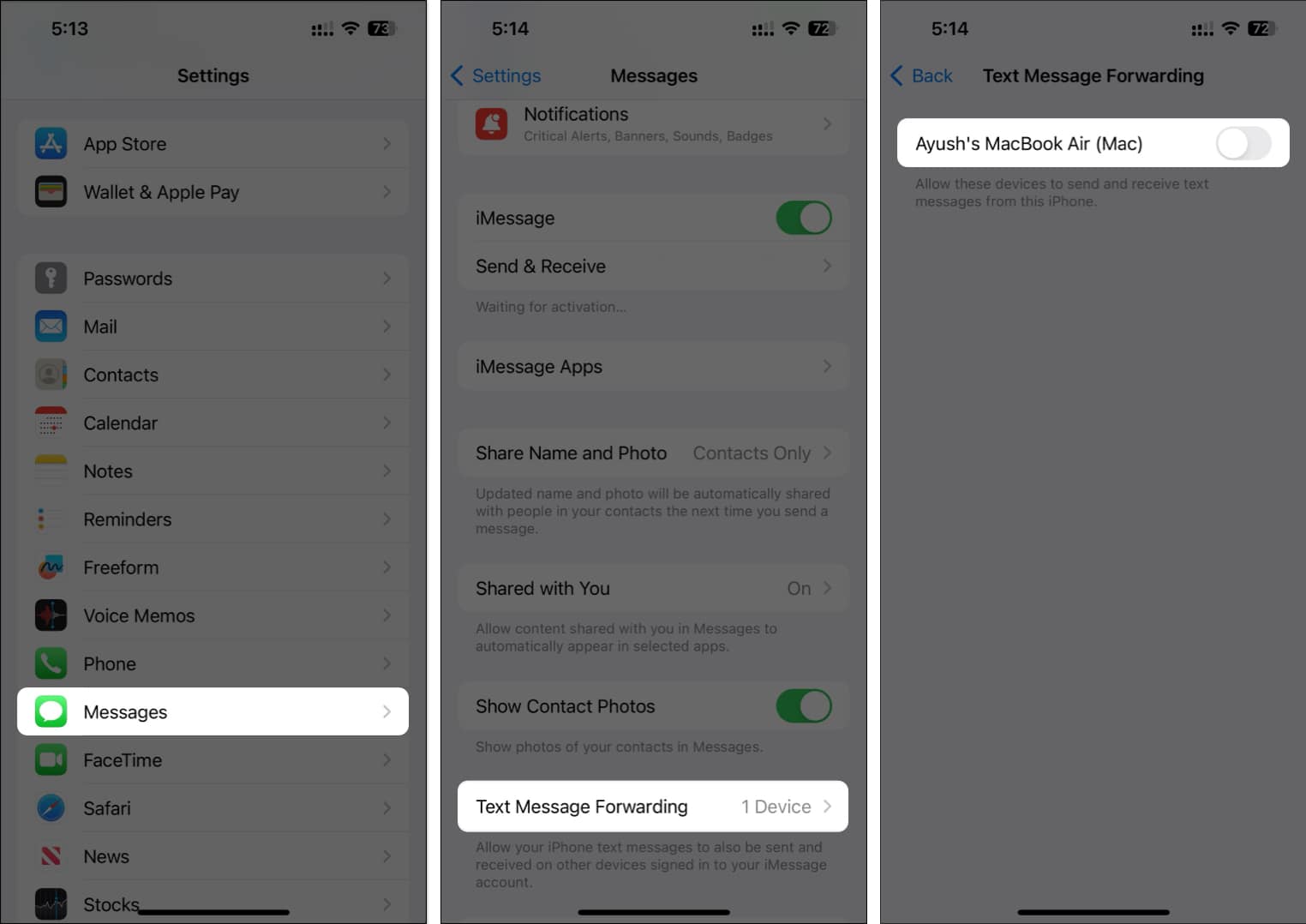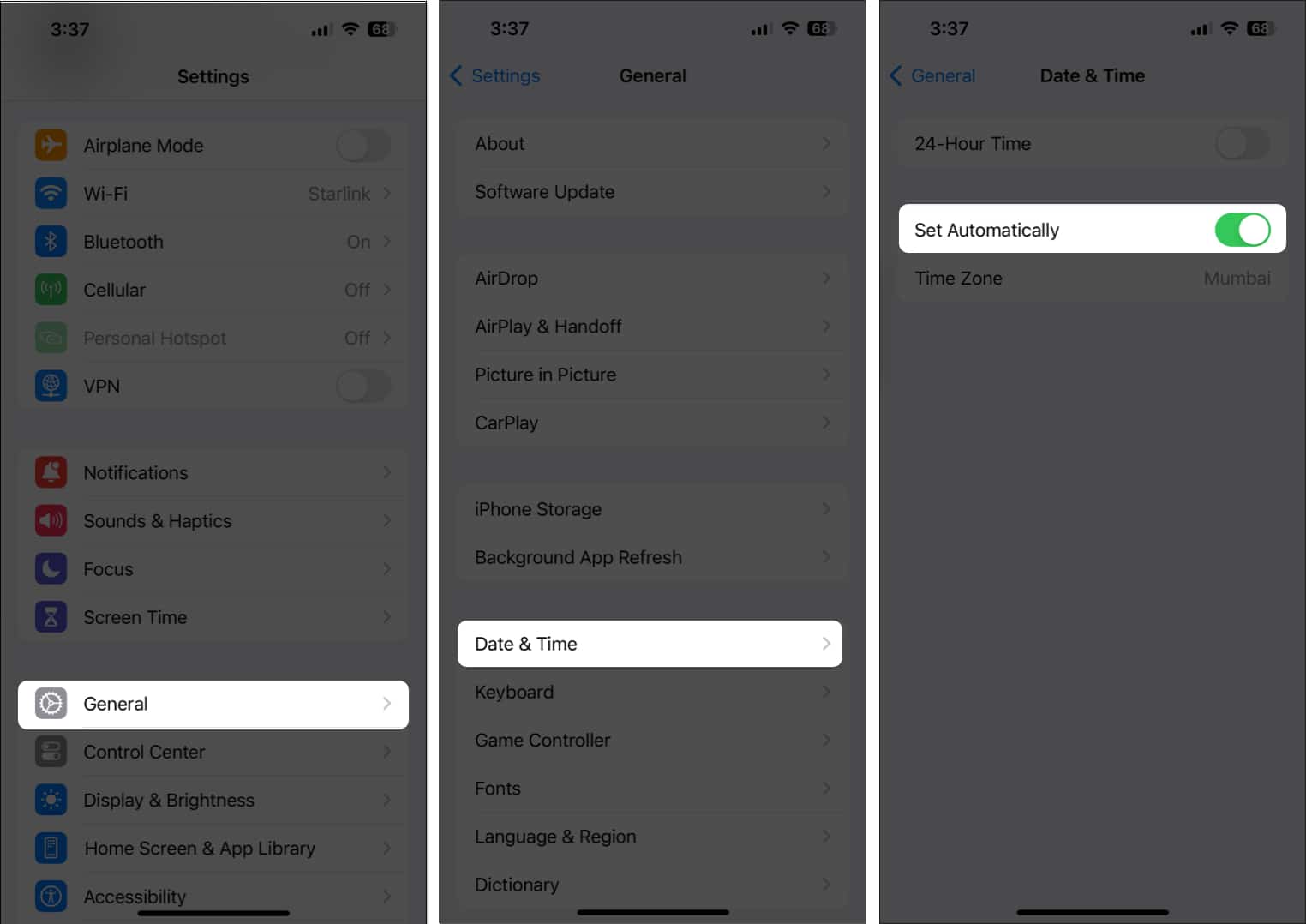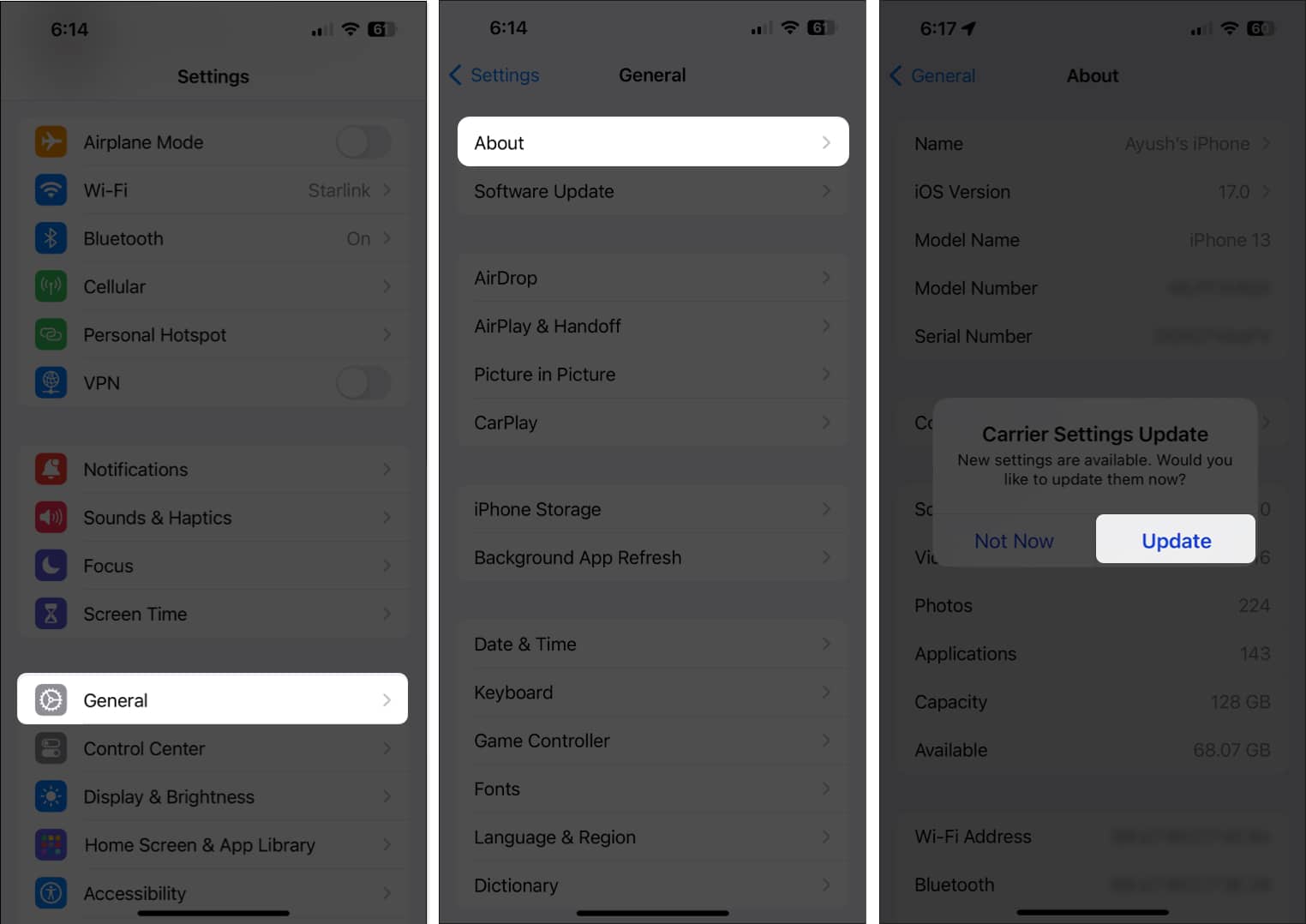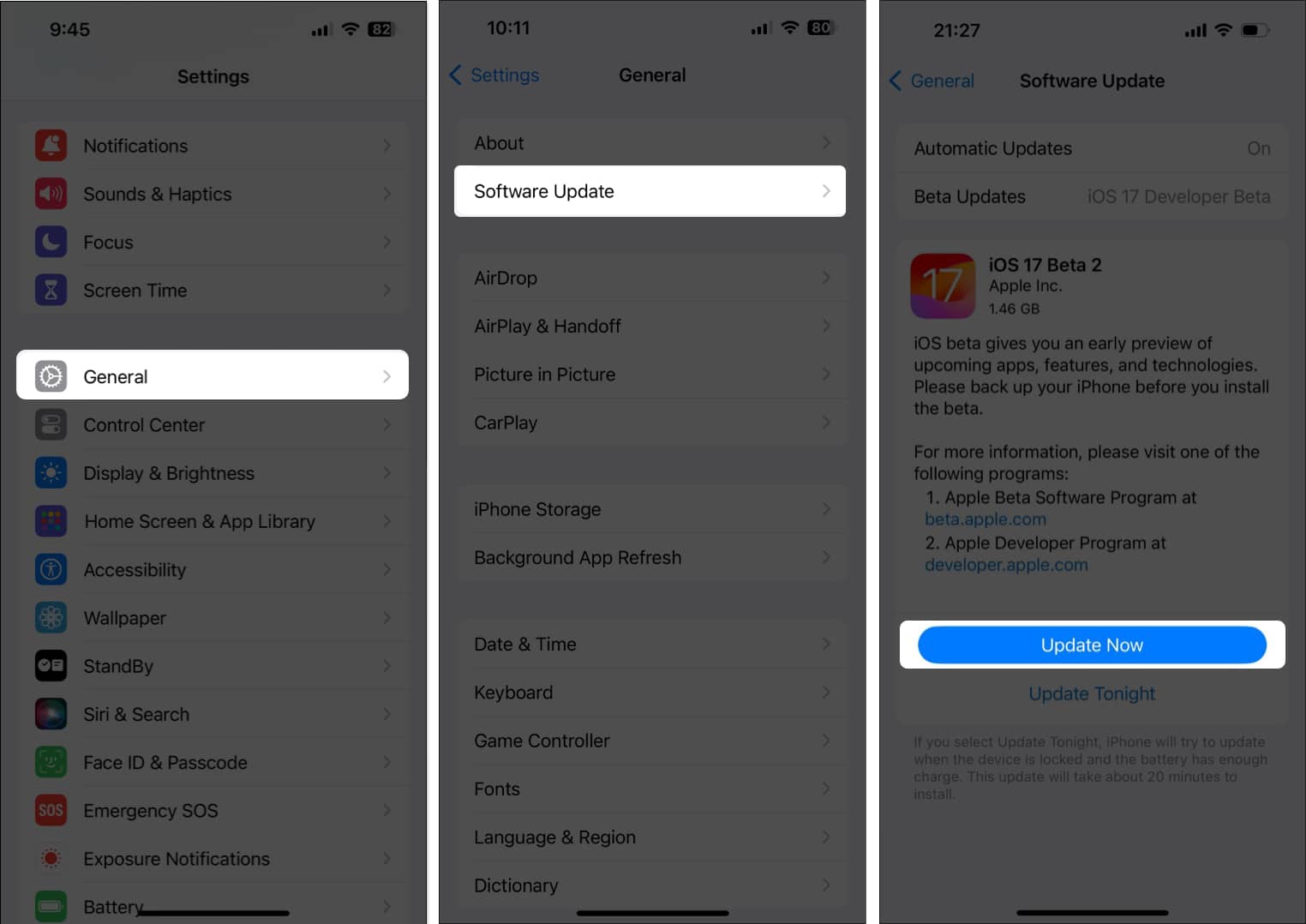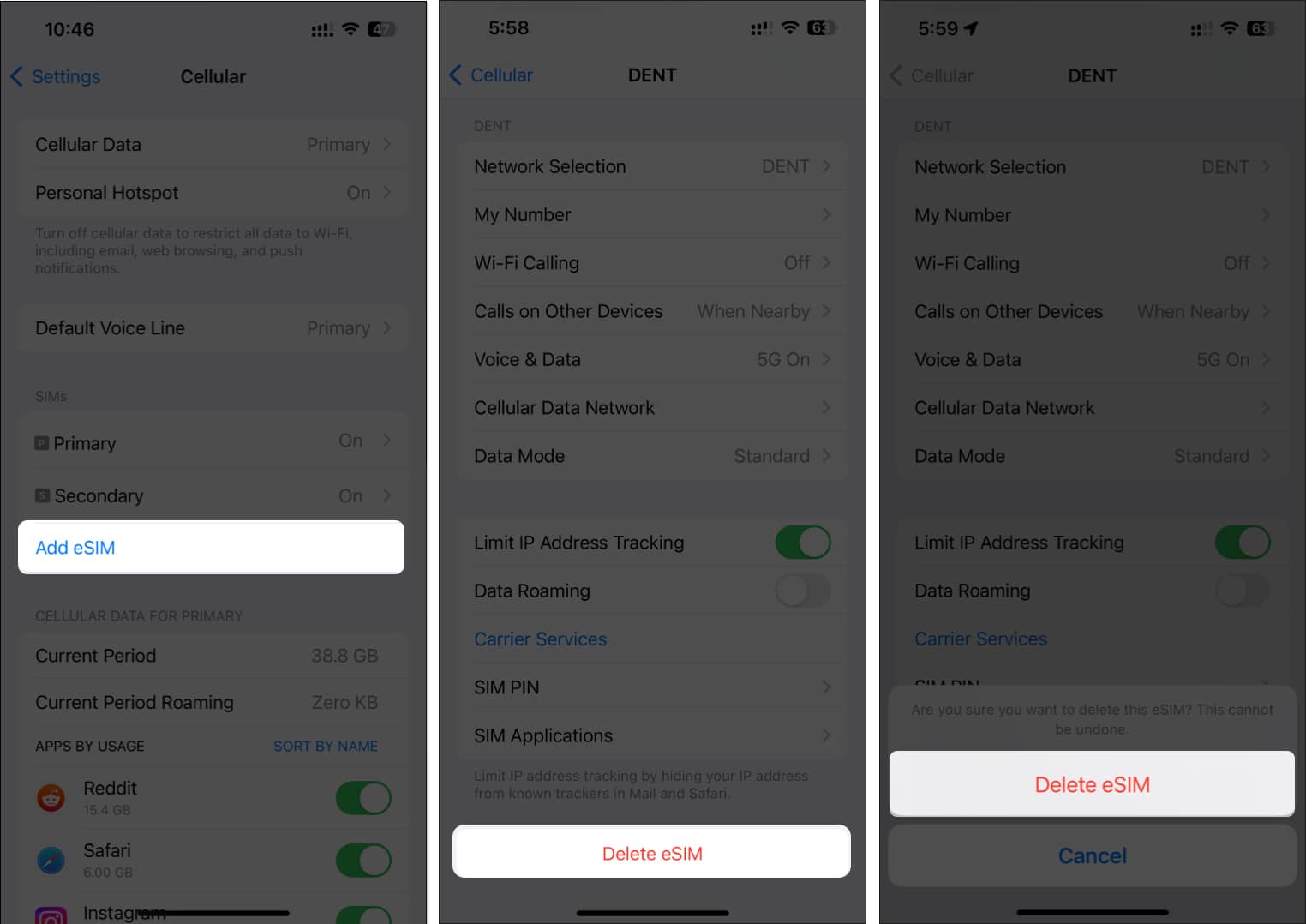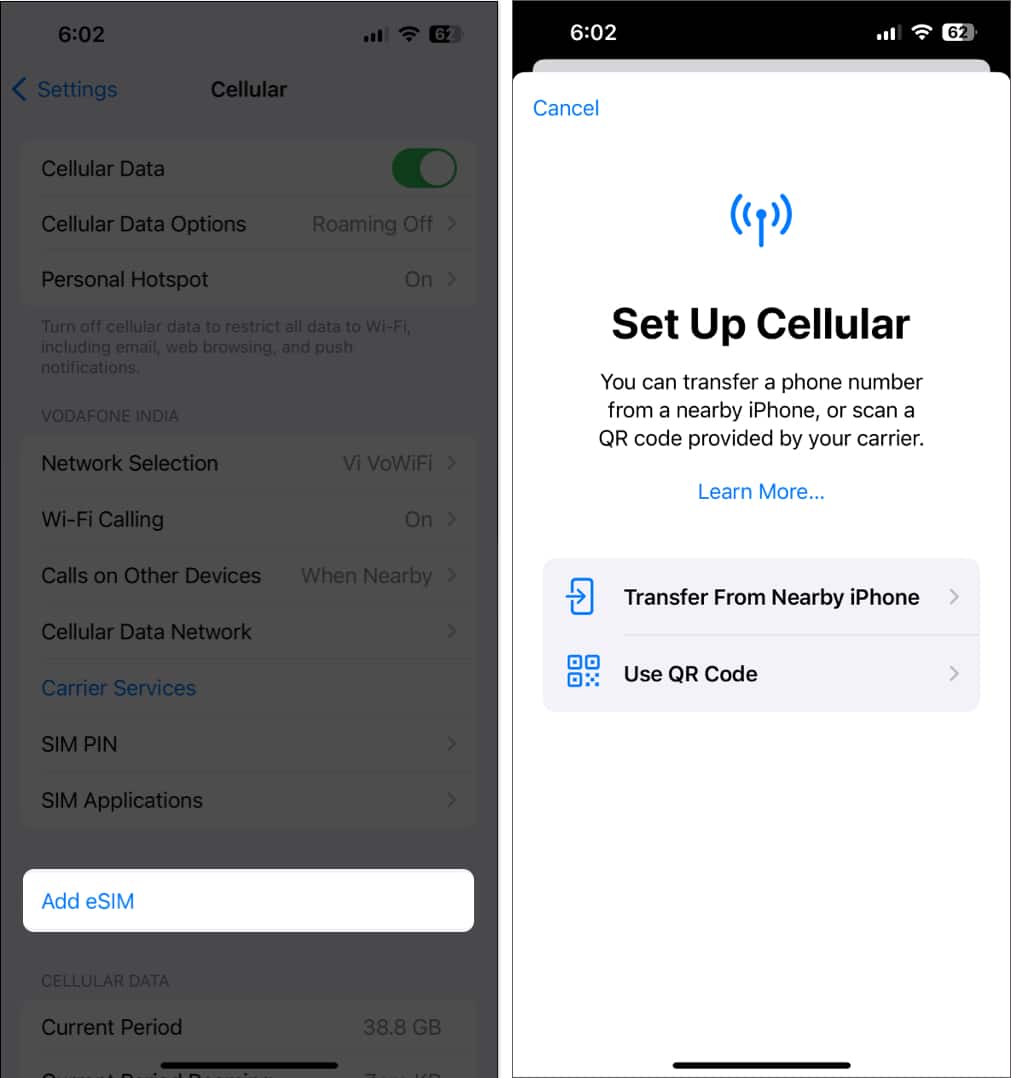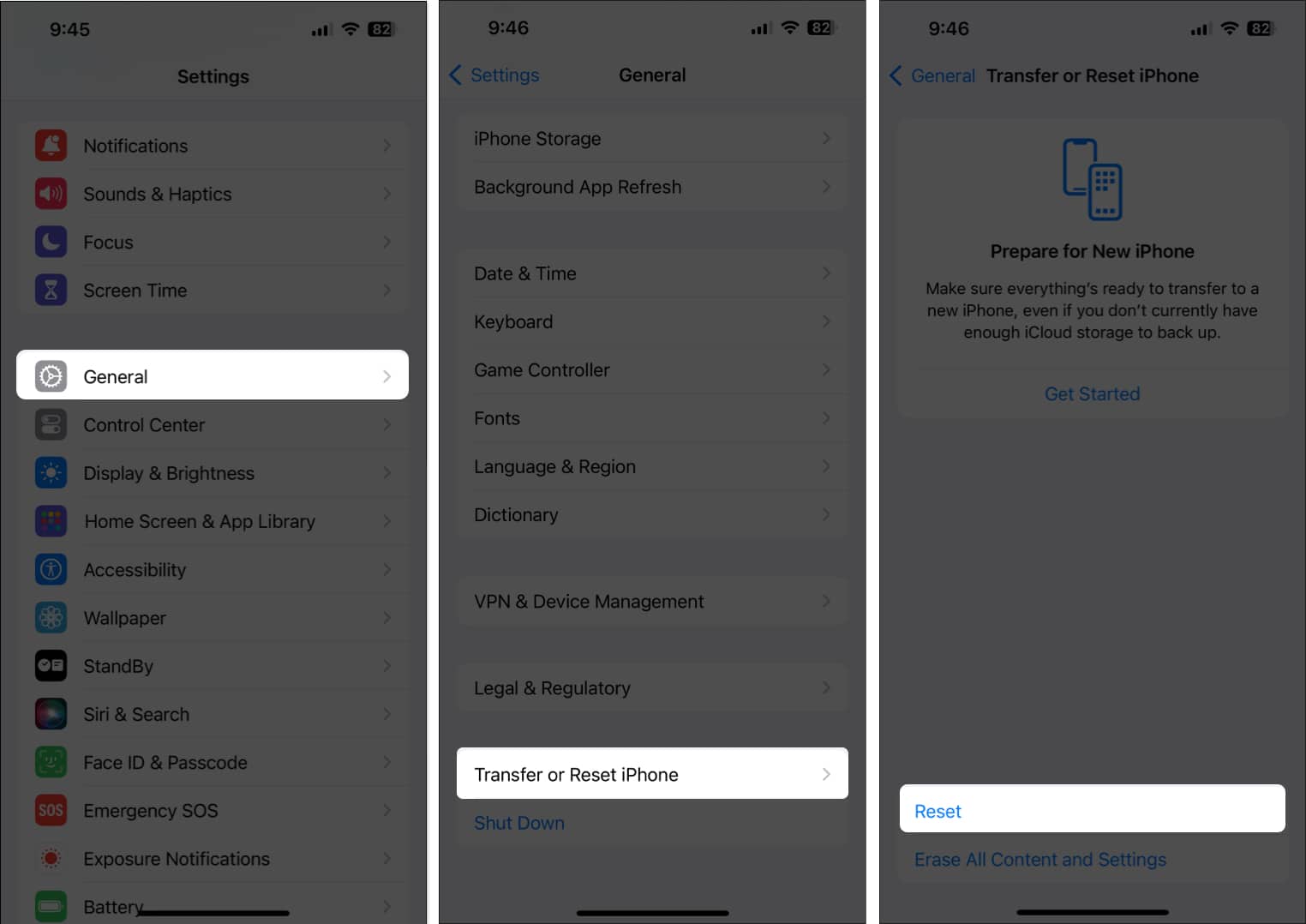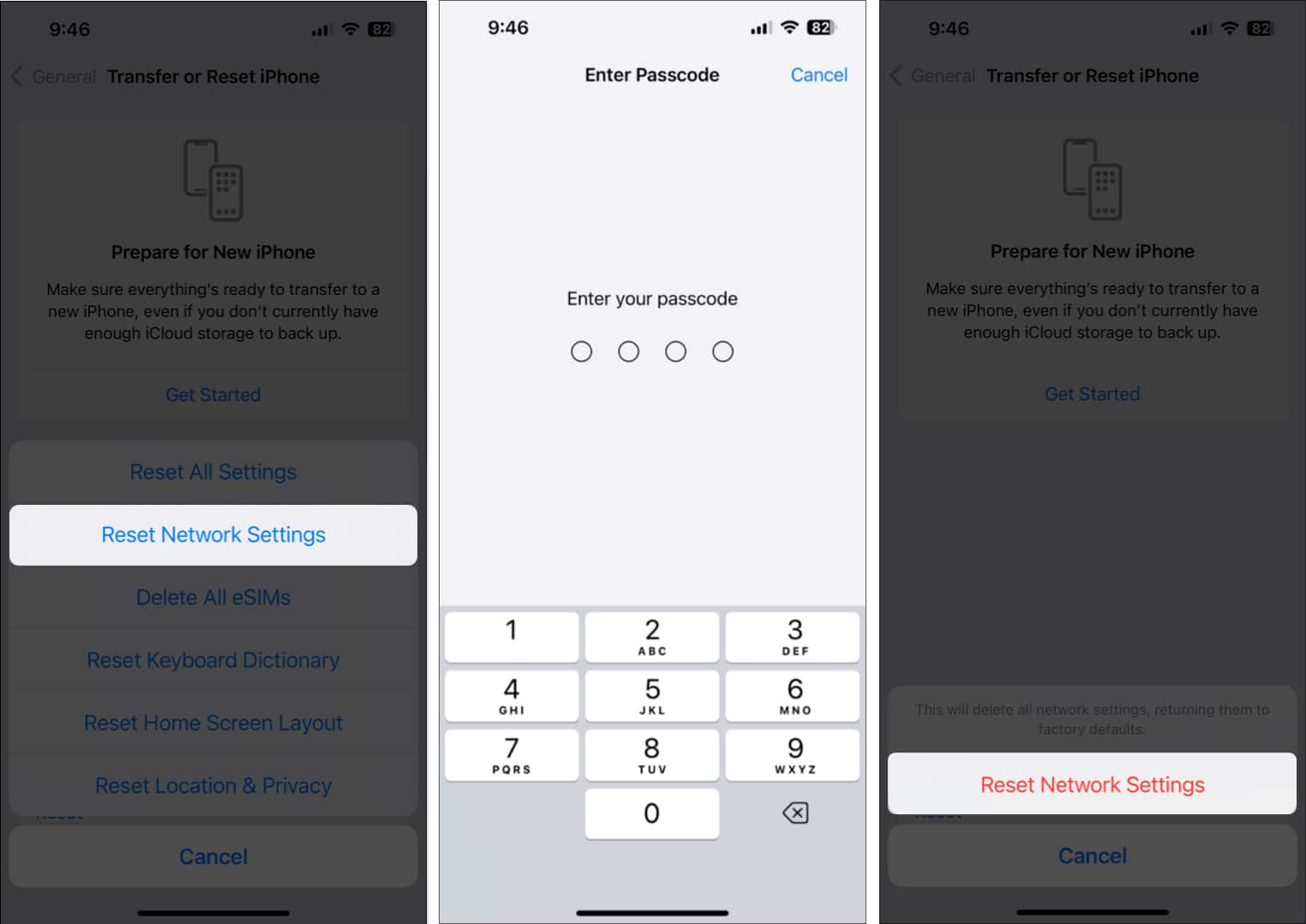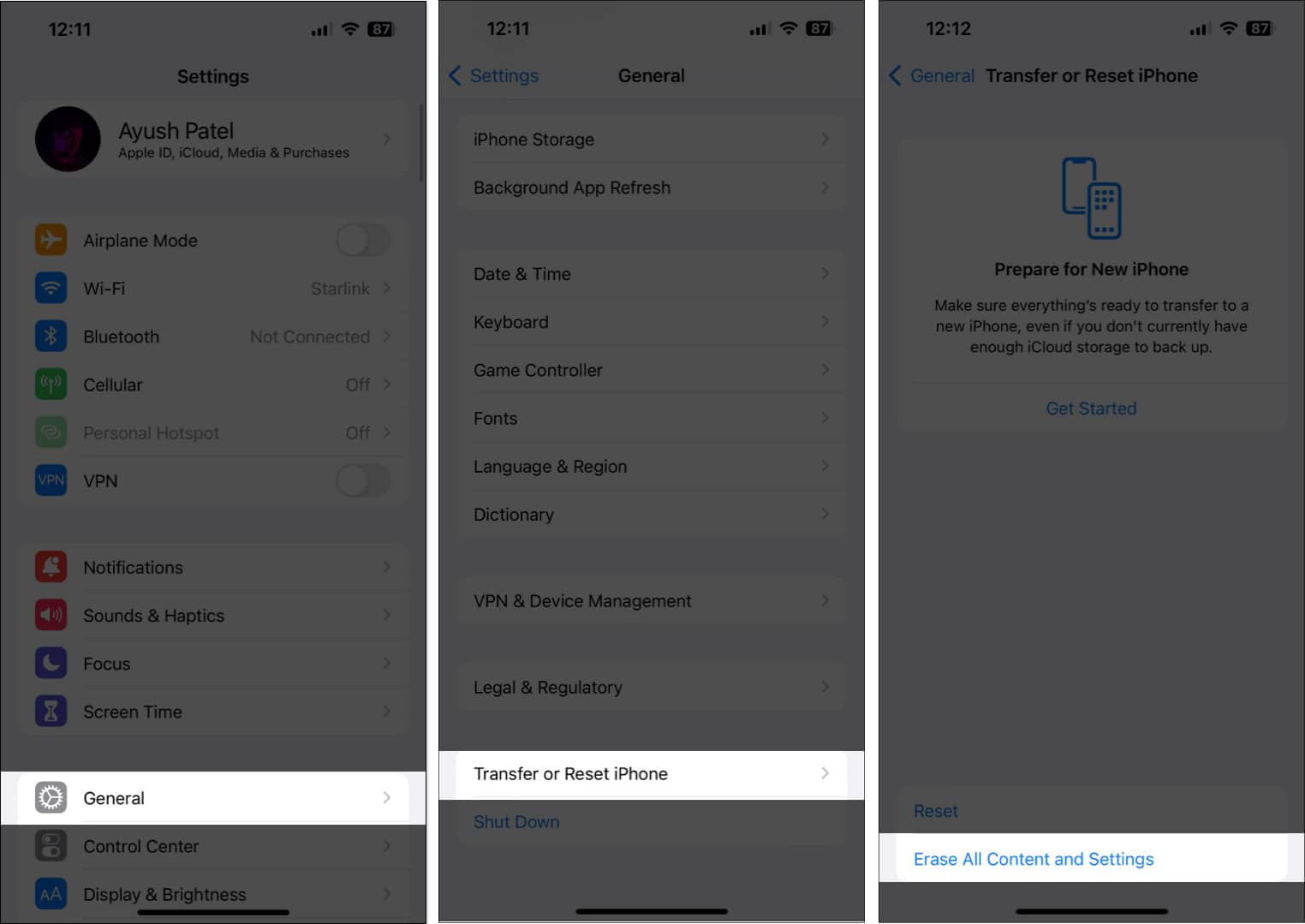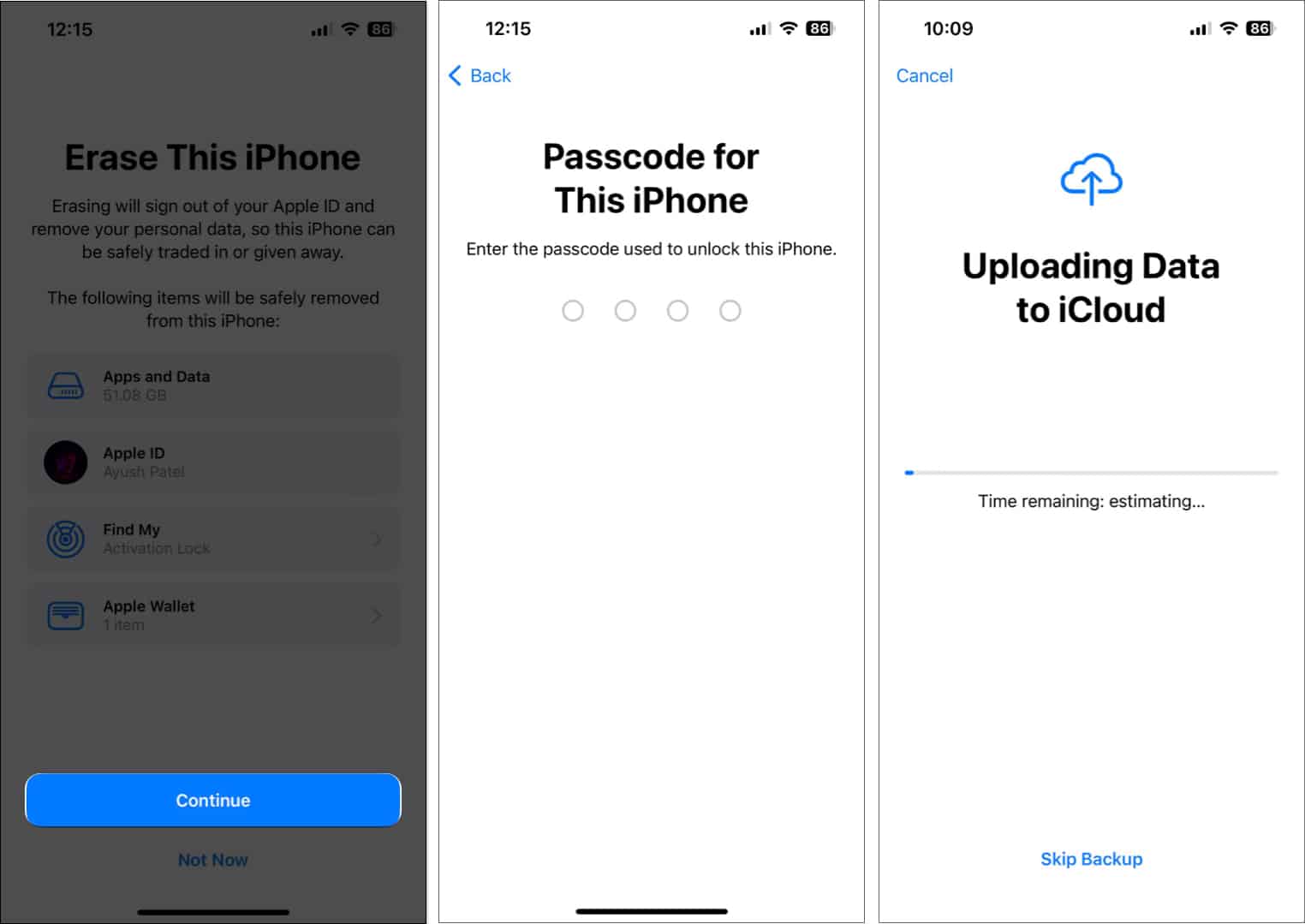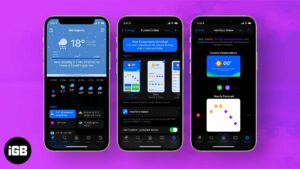Is your iPhone not sending text messages? Don’t worry; it happens to the best of us. Whether you’re trying to send a quick update to your friend or an important message for work, having your texts stuck in limbo can be a real pain. But fear not! This guide will walk you through various troubleshooting steps to identify why your iPhone can’t send text messages and fix the same.
- Restart iPhone
- Close and relaunch Messages app
- Re-check recipient’s phone number
- Check your cellular reception using Airplane mode
- Check your cellular plan’s validity
- Select correct conversation line
- Ensure SMS and MMS are turned on
- Turn off iMessage on your iPhone
- Delete and start new message thread
- Turn Off Text Message Forwarding on iPhone
- Check date and time settings on iPhone
- Check for carrier updates
- Install latest iOS update
- Remove and reinsert the SIM card
- Reset your iPhone’s network settings
- Erase all content and settings on iPhone
1. Restart iPhone
If your iPhone’s text messages are not getting delivered, a simple restart can often fix the issue. It’s a quick and easy way to refresh your phone’s software and clear any temporary bugs that can prevent messages from going through.
To restart an iPhone X or later, hold the Side button and the Volume button. Then slide to power off. However, if you have an older iPhone, you have to hold either the Top or Sleep/Wake button to access the power off menu.
Alternatively, you can also restart your phone manually, as detailed below:
- Navigate to Settings → General.
- Scroll down and tap Shut Down → slide to power off.
- Wait for one minute → Hold the Side button to start your iPhone.
2. Close and relaunch Messages app
If you’re having trouble sending text messages from your iPhone, a simple fix may be to close and relaunch the Messages app. This can sometimes clear up minor glitches or issues that are preventing messages from being sent.
- Open the App Switcher → Swipe up on the page for the Messages app.
- Relaunch the Messages app and check if you can send text messages.
3. Re-check recipient’s phone number
If your iPhone is not sending text messages to an Android smartphone, you might want to re-check the recipient’s phone number before trying other troubleshooting methods.
Often, unintended typos, incorrect formatting, and issues with the country code can prevent messages from being delivered on your iPhone.
4. Check your cellular reception using Airplane mode
Your iPhone relies on a stable cellular connection to send text messages. So, if the preliminary solutions didn’t help, you might want to ensure your iPhone has proper cellular reception with at least three bars of signal.
If you have poor cellular reception on your iPhone, you can try moving to a different room or location to see if that helps.
But if you keep experiencing issues, follow the steps below to reconnect your iPhone to cellular services.
- Open the Control Center on your iPhone.
- Tap and enable Airplane mode for a few seconds → Then turn it off.
5. Check your cellular plan’s validity
If your iPhone isn’t sending text messages, one plausible explanation for this could be an expired cellular plan.
If you’re unsure about your cellular plan’s validity, you must contact your cellular service provider to ensure your plan is still active and has enough data and/or SMS credits for sending texts.
6. Select correct conversation line
Suppose are using dual SIM on your iPhone, wherein only one SIM supports texting and the other SIM is only reserved for data. In that case, you should ensure that you’ve selected the correct SIM or conversation line that can be used for sending texts.
If the wrong line is selected, your iPhone’s text messages won’t be delivered.
- Open the Messages app → Then, open any message thread.
- Tap the contact’s name at the top.
- Tap Conversation Line → Select your preferred SIM.
7. Ensure SMS and MMS are turned on
If you’re unable to send text messages from your iPhone, make sure both SMS and MMS are turned on in the Settings app.
If these options are turned off, the iPhone will always send your messages as iMessage instead of SMS.
- Navigate to Settings → Messages.
- Scroll down and toggle on Send as SMS.
- Then, toggle on MMS Messaging.
8. Turn off iMessage on your iPhone
Many times, your iPhone may try to send your text messages as iMessage, which can be an issue if the person on the receiving end uses an Android device.
To ensure this isn’t the case with you, you should turn off iMessage.
- Navigate to Settings → Messages.
- Then, toggle off iMessage.
9. Delete and start new message thread
If your iPhone can’t send text messages to a specific contact, deleting and starting a new message thread might be the solution. This can sometimes fix issues caused by corrupted data or glitches within the existing thread.
- Open Messages → Tap the three-dot menu → Select Messages.
- Select the message threads you would like to restart → Tap Delete.
- Tap the Compose button in the top right corner → Add the recipients.
10. Turn Off Text Message Forwarding on iPhone
Another effective solution to fix the problem is to disable Text Message Forwarding.
This feature allows you to receive and send SMS/MMS messages from your iPhone on connected Apple devices like Macs or iPads. However, this feature can be glitchy and prevent you from sending texts.
- Navigate to Settings → Messages.
- Scroll down and tap Text Message Forwarding.
- Turn off the toggle next to the connected Apple devices.
11. Check date and time settings on iPhone
While this may seem trivial, Incorrect date and time settings on iPhones can also prevent you from successfully sending text messages.
This is because cellular services rely on accurate date and time settings for delivering text messages and ensuring proper synchronization between the devices.
- Navigate to Settings → General.
- Select Date & Time → Toggle on Set Automatically.
12. Check for carrier updates
Outdated carrier settings can also result in your iPhone not sending text messages.
You should regularly install these updates as they affect various aspects of your cellular network, including SMS/MMS functionality.
- Navigate to Settings → General → About.
- If a Carrier Settings Update dialog pops up → Tap Update.
13. Install latest iOS update
Installing the latest iOS update can be a convenient solution to make the iPhone send text messages again.
Updates include bug fixes and improvements that address various issues, including those related to text messaging.
- Navigate to Settings → General → Software Update.
- Tap Update Now if a software update is available.
14. Remove and reinsert the SIM card
Struggling to send or receive text messages on your iPhone? A simple trick that often works wonders is removing and re-inserting your SIM card. This can sometimes resolve issues caused by poor contact between the card and your iPhone’s internal reader, leading to communication disruptions.
Apart from the iPhone 15 and 14 models sold in the United States, all iPhones have a physical SIM card slot on the left side. Use the ejector tool or a pin to remove the SIM card. Then, clean it with a soft, dry cloth before reinserting it.
In case your iPhone uses an eSIM, follow these steps to delete and re-add it:
- Go to Settings → Cellular.
- Select the eSIM you want to Delete → Tap Delete eSIM.
- Tap Delete eSIM again to confirm the action.
- Tap Add eSIM → Follow the instructions to set up the eSIM again.
15. Reset your iPhone’s network settings
Resetting the network settings will reset all network-related settings to their default values, which can sometimes resolve issues caused by incorrect network configurations.
- Navigate to Settings → General → Transfer or Reset iPhone.
- Tap Reset → Reset Network Settings.
- Enter your iPhone’s passcode.
- Tap Reset Network Settings again to complete the process.
16. Erase all content and settings on iPhone
If your iPhone is still unable to send text messages, erasing all content and settings might be your last resort.
This will restore your iPhone to its factory state and wipe away all your data. While it’s not ideal, it can be a powerful solution for resolving issues caused by software glitches or corrupted files.
- Navigate to Settings → General → Transfer or Reset iPhone.
- Choose Erase All Content and Settings.
- Tap Continue → Type the iPhone Passcode.
- Follow the given instructions once the iCloud backup is complete.
Contact Apple or the carrier for support
If you’ve tried all the fixes and your iPhone is still not sending text messages, it’s time to call in the experts. Contacting Apple or your carrier’s customer support can provide the expertise needed to diagnose and fix the issue.
Wrapping up…
By following the tips in this guide, you should have successfully revived your iPhone’s texting capabilities. Now, you can continue sending and receiving messages without any hiccups. If this guide was able to help you resolve the problem, we would love to hear which solution did the trick for you.
Also read:
- Live Voicemail not working on iPhone? 9 Ways to fix it!
- How to rearrange and delete iMessage apps on iPhone or iPad
- How to turn on iMessage Contact Key Verification on iPhone
🗣️ Our site is supported by our readers like you. When you purchase through our links, we earn a small commission. Read Disclaimer.

